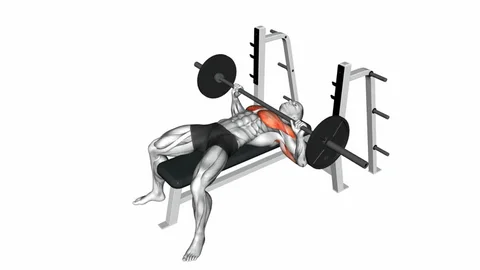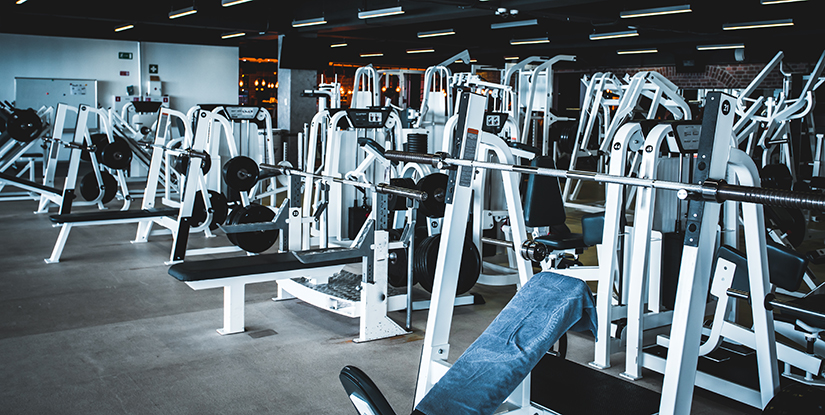A 160kg bench press used to feel like pure fantasy to me.
Like, the kind of number only mutant lifters at your local commercial gym can hit while the rest of us just stare in disbelief. First time I saw a guy load up 3 plates plus a little extra? I legit thought, “Okay, this dude’s either on something… or just blessed with some alien DNA.”
But here’s the thing—after years of showing up, logging sessions, missing lifts, fixing form, and grinding it out—I started noticing something.
Yeah, some dudes are built to press heavy. Short arms, thick chests, strong triceps—sure, that helps. But I’ve also watched guys with average builds and zero “gifted” features work their way to a clean 160kg.It wasn’t some secret sauce or raw talent. It was straight-up hard work, showing up week after week, and locking in all the small stuff that most lifters overlook.
So if you’re training in a real gym, seeing big numbers fly around, and wondering if you’ve got a shot too—this one’s for you.
What 160kg Means in the Gym
A 160kg bench press isn’t beginner weight — not even close.
In most commercial gyms I’ve trained at, only a few people ever touch it. And when they do, heads turn. It’s that level of heavy.
For natural lifters, 160kg is right on the edge of elite. You don’t just stumble into it — it takes years of solid training or seriously good leverages.
And if you’re doing it clean, no bounce or early spotter grabs? You’re moving real weight. No debate.

Does It Take Freak Genetics to Bench 160kg?
Alright, real talk — you don’t need to be a genetic monster to hit a 160kg bench press. But yeah… having good leverages definitely helps.
If you’ve got a barrel chest, short arms, and solid frame? You’re basically built for bench. The bar moves less, and you’ve got better angles. Lucky you.
Now, if you’re more on the lanky side — long arms, flat torso, narrow frame — it’s a tougher climb. I’ve been there. Every rep feels longer, and there’s less muscle involved off the chest.
But here’s the thing — I’ve still seen tons of average-built guys hit 160kg over time. Even lifters you wouldn’t expect. It just takes more grinding, more patience, and way less ego.
Eventually, it’s less about what you were born with and more about how consistent you are. Like:
- Are you training smart, not just maxing every week?
- Are you hitting your triceps, shoulders, and upper back regularly?
- Are you recovering right — food, sleep, all that boring stuff?
- Are you sticking with the process even when the numbers crawl?
So yeah, it’s doable. Genetics only decide how fast or painful the road is. The rest? That’s just hard work and time under the bar.
You won’t wake up one day benching 160kg by accident. But if you stay in the game, tighten the details, and keep showing up — you’ve got a real shot.
What Actually Got Me From 140kg to 160kg
Once I hit 140kg, I thought 160 would be just a few months away. Yeah… no. Things stalled hard. So I had to stop winging it and get way more dialed in. Here’s what actually worked — no fluff.
Form Fixes That Made a Real Difference
Learning proper leg drive was a game changer. Before that, I was just lying flat and praying.
I also started locking my upper back in — tight lats, retracted shoulders, real braced setup. That alone made the bar path way smoother.
Then came the bulldog grip. Swapped out my old loose wrist angle and stacked everything right over my forearms. Boom — 150kg felt way less sketchy.
Bottom line: heavy benching exposes everything. Once you’re chasing big singles, little technique tweaks matter a lot.
Training Smarter, Not Just Heavier
I split my bench days into one heavy day and one volume-focused. That was huge. Trying to max every session just ran me into the ground.
On volume days, I hit stuff like close-grip, incline, and tempo reps — 8 to 12 reps, nice and clean. That built serious size in all the right places.
Specialty lifts were clutch too. JM presses saved my elbows and built lockout strength. Board presses let me overload safely. Paused reps helped me stop bouncing and actually control the weight.
And yeah, I stopped ego lifting. No more weekly max attempts. I made peace with leaving a couple reps in the tank.
Accessories That Actually Moved the Needle
Triceps, front delts, upper back — I hammered them.
Rows, dips, overhead presses — all staples. I rotated them in consistently, not just when I “felt like it.” The more stable and strong those areas got, the smoother my bench felt.
Some guys sleep on assistance work. Don’t. It fills in the gaps your bench press doesn’t hit directly.
Food, Sleep, and Just Showing Up
Honestly? None of that training would’ve worked if I wasn’t eating and recovering right.
I plateaued for 6 months straight just because I wasn’t eating enough. Once I actually started fueling properly, things moved again.
Sleep was another big one. 6 hours? I felt beat up. 8 hours? I was hitting PRs.
And yeah — this took years. I didn’t just stumble into 160kg raw. I had to show up week after week, even when progress felt like it was crawling.
If you can stay locked in — with the basics, not just the flashy stuff — you’ve got a real shot.
At the end of the day, if your gym has solid gear and you’ve got the drive, a 160kg bench press is absolutely doable. It won’t come easy—but if you’re willing to put in the work, it’s within reach.
Related articles:
Why I Use a Machine for Bench Press When Training Alone
Why I Switched to the 3CT Bench Press and Got Stronger
FAQs about 160kg Bench Press
Whether a 160 kg (approximately 352 lbs) bench press is considered good largely depends on the context, including factors such as age, weight, gender, and training experience.
For average gym-goers, a bench press of 160 kg is quite impressive and generally surpasses typical performance standards. It indicates a high level of strength and dedication in training.
However, in the context of competitive lifting, especially among experienced powerlifters, this number could be seen as average or slightly above average depending on the weight class. For instance, elite powerlifters in heavier weight classes often bench significantly more than 160 kg. Therefore, while 160 kg is an excellent achievement for most people, how it ranks can vary in different settings.
Yes, it is certainly possible to bench press 160 kg, but achieving this weight requires substantial strength training and dedication. Reaching a 160 kg bench press typically takes years of consistent training with a focus on technique, progressive overload, and proper nutrition.
Athletes, particularly powerlifters and bodybuilders, often bench press 160 kg or more. However, it’s essential to understand that such a milestone is not achievable overnight and includes potential challenges like plateauing in strength gains, avoiding injury, and maintaining overall physical conditioning. Working with a certified personal trainer or a coach can be especially helpful in safely reaching such goals.
For a 165 lb (approximately 75 kg) man, the amount they can bench press can vary greatly based on their experience and training level. Generally speaking:
Beginner: A beginner might be able to bench press approximately their body weight, so around 165 lbs (75 kg).
Intermediate: An intermediate lifter usually benches around 1.25 to 1.5 times their body weight, equating to approximately 207 lbs (94 kg) to 247 lbs (112 kg).
Advanced: An advanced lifter could be benching 1.75 to 2 times their body weight, which translates to 288 lbs (130 kg) to 330 lbs (150 kg).
These figures offer a general idea, but individual capabilities can vary based on several factors such as training consistency, muscle composition, and individual biomechanics.
Bench pressing 140 kg (approximately 308 lbs) is a notable feat of strength that places an individual above the average strength level. However, precise statistics on how many people can bench 140 kg are hard to pinpoint due to varying factors such as demographics, lifting experience, and fitness levels.
Generally, bench pressing 140 kg is often accomplished by intermediate to advanced lifters. In competitive powerlifting, this number might be considered achievable by many athletes in various weight classes. However, in the general population or among casual gym-goers, fewer individuals reach this milestone due to the specific and rigorous training required.
Fitness enthusiasts who train regularly and follow strength programs might reach or exceed this level, but it represents a significant commitment to weight training and physical fitness.

Hi, I’m the editor here at Leadman Fitness. We’re a manufacturer focused on producing top-quality barbells, plates, kettlebells, dumbbells, and strength training gear. I’ve been into sports and fitness for years, and I know my way around all kinds of gym equipment—both from using it and helping create it.
I spend a lot of time understanding the real problems people run into in the gym—whether it’s beginners trying to pick the right gear or experienced lifters looking for something more durable. I stay in close touch with our production team and talk directly with other equipment makers, so we’re always improving based on what real lifters and coaches are looking for.
What I share comes from hands-on experience—stuff that actually helps people train better, not just in theory, but in real gyms.
